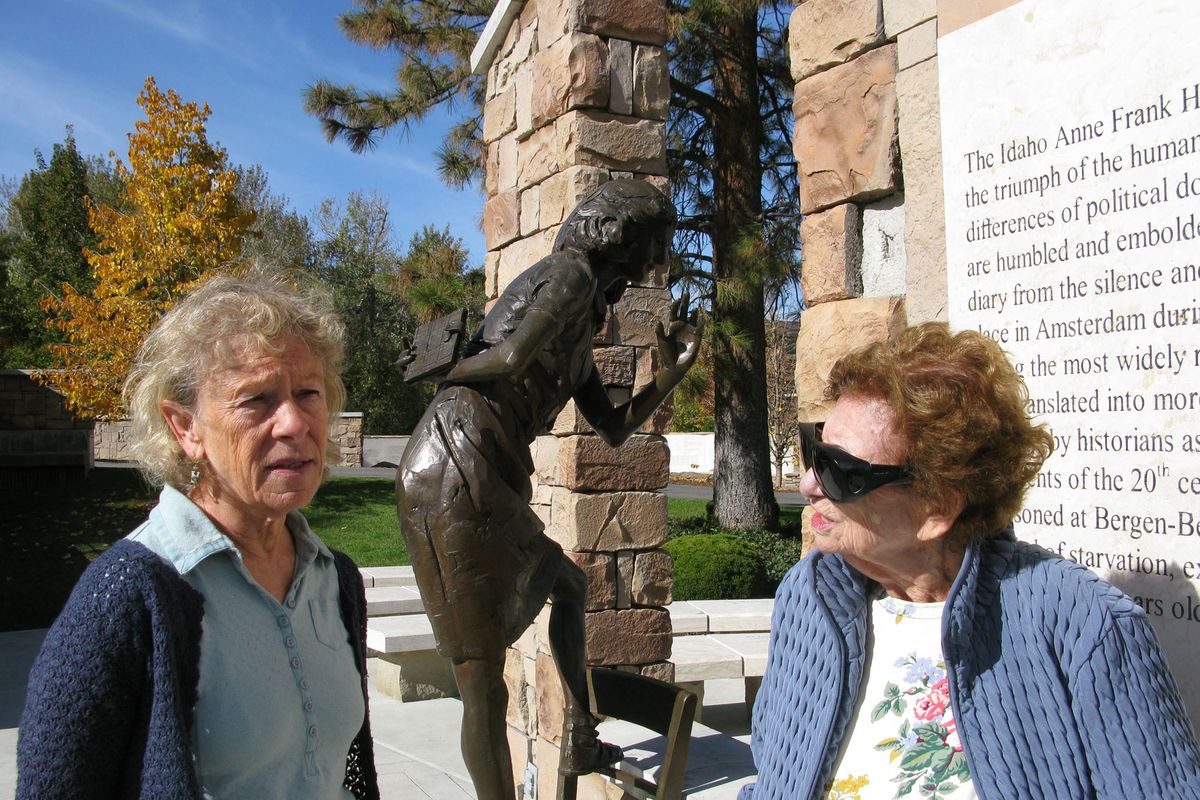Memorial to add a sapling from the tree outside Anne Frank’s secret annex

Idaho’s Anne Frank Human Rights Memorial in Boise has been selected to receive a sapling grafted from the chestnut tree that grew outside the secret annex in Amsterdam where Anne Frank hid from the Nazis.
It’s a reminder that Idaho has the nation’s only permanent memorial to Anne Frank.
“We try to really draw the parallels between what happened to Anne and what can happen to anyone,” said Don Curtis, of Boise, who with his wife, Susan, volunteers to lead tours of the Boise memorial. “The message is: Understand what happened back then, but don’t think it’s just then.”
Rose Beal, a Holocaust survivor who moved to Boise just after the memorial was dedicated, said when she heard about it, she thought: How is that possible?
“I came here and my mouth fell open, and it was awesome to see this – still is awesome,” she said, looking around at the stonework engraved with quotes about human rights, the bronze sculpture of Anne, the displays and the trees swaying in a fall breeze.
Boise’s Anne Frank memorial was dedicated in 2002, after thousands of individuals and corporations donated to help build it and schoolchildren across the state collected coins to fund a $42,000 life-size bronze sculpture of Anne, peering through an attic window in the hidden annex where she and relatives sought shelter during World War II.
In her diary, the girl frequently wrote about the chestnut tree as a source of solace.
Anne Frank died in a German concentration camp at age 15.
Her diary, published two years later, became one of the world’s most widely read books. It tells of how, throughout her ordeal, the Jewish girl never lost her faith that people are basically good.
“The community is immensely proud of the (Boise) memorial, and I think feels a great sense of ownership over the space,” said Amy Herzfeld, executive director of the Idaho Human Rights Education Center in Boise.
The memorial came about after a traveling exhibit about Anne Frank drew more than 46,000 visitors in a single month in Boise in 1995.
The outpouring of support for the traveling exhibit led to formation of the Human Rights Education Center, which developed school curriculum, educational programs and the permanent memorial.
Herzfeld visited the Anne Frank House Museum in Amsterdam in 2007 with a group of Idaho schoolteachers, where the 150-year-old chestnut tree still stands.
“I remember a big shade tree,” Herzfeld said. “It was beautiful. It was very striking.”
In February 1944, Anne Frank wrote in her diary, “The two of us looked out at the blue sky, the bare chestnut tree glistening with dew, the seagulls and other birds glinting with silver as they swooped through the air, and we were so moved and entranced that we couldn’t speak.”
In May 1944, three months before she and her family were captured, Anne wrote, “Our chestnut tree is in full bloom. It is covered with leaves and is even more beautiful than last year.”
The Amsterdam museum, in cooperation with the Anne Frank Center USA in New York, took applications from dozens of U.S. institutions interested in getting a sapling from the 150-year-old chestnut tree. Eleven were selected, including the White House, the site of the Sept. 11 attacks in New York, and Central High School in Little Rock, Ark., the site of forced racial integration in 1957.
One sapling also will go to Seattle’s Volunteer Park, not far from where a 2006 shooting at the Jewish Federation of Greater Seattle left one woman dead and five people injured.
The sapling, about 3 feet tall, is expected to arrive in Boise soon, but it’ll go to a city tree nursery for a two-year quarantine before it’s planted.
Herzfeld is eyeing a site on a grassy berm, next to a writing tablet that memorializes Idaho Sen. Frank Church, and right in the line of sight for the Anne Frank statue as she peers through stonework depicting an open attic window.